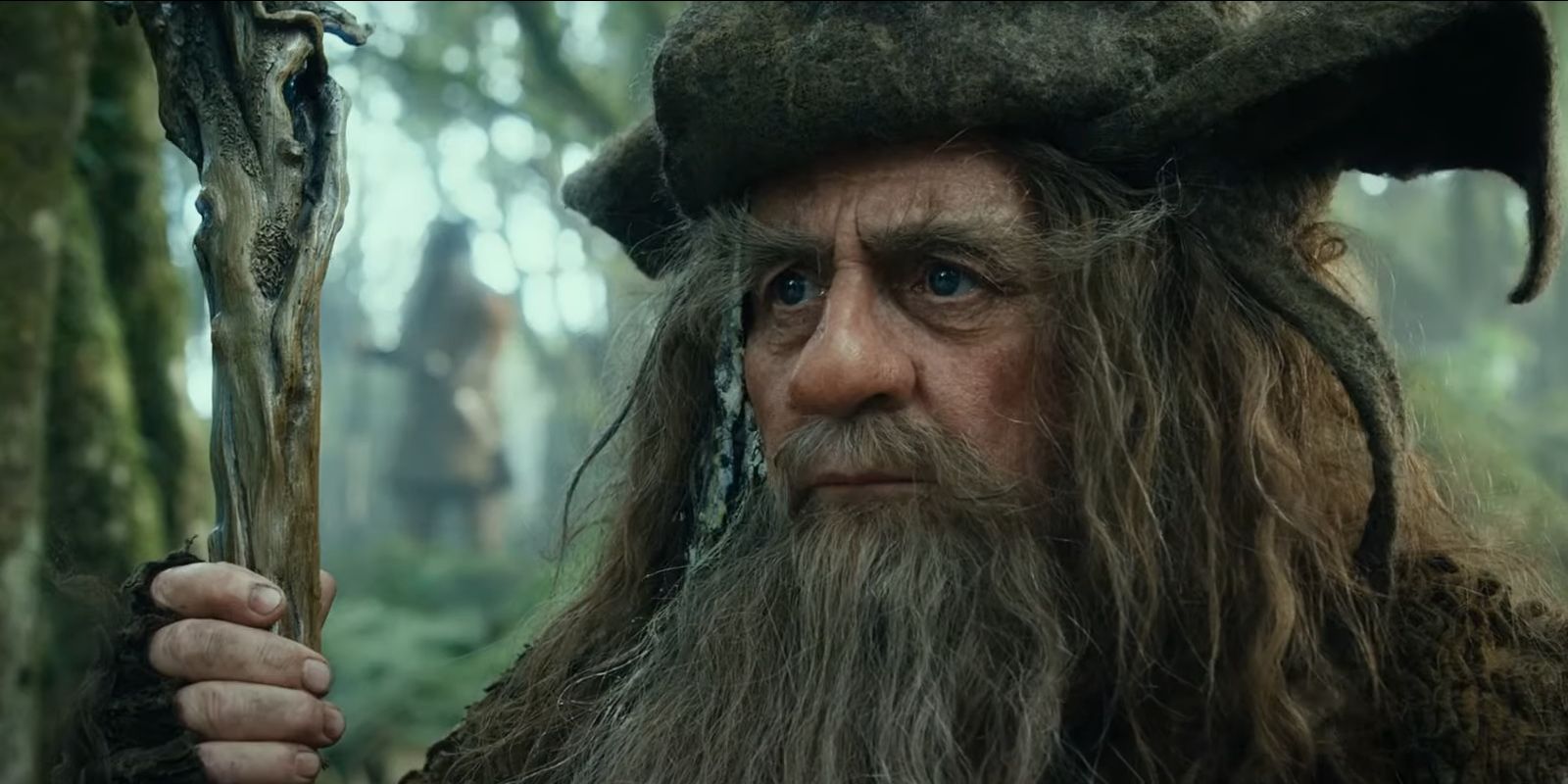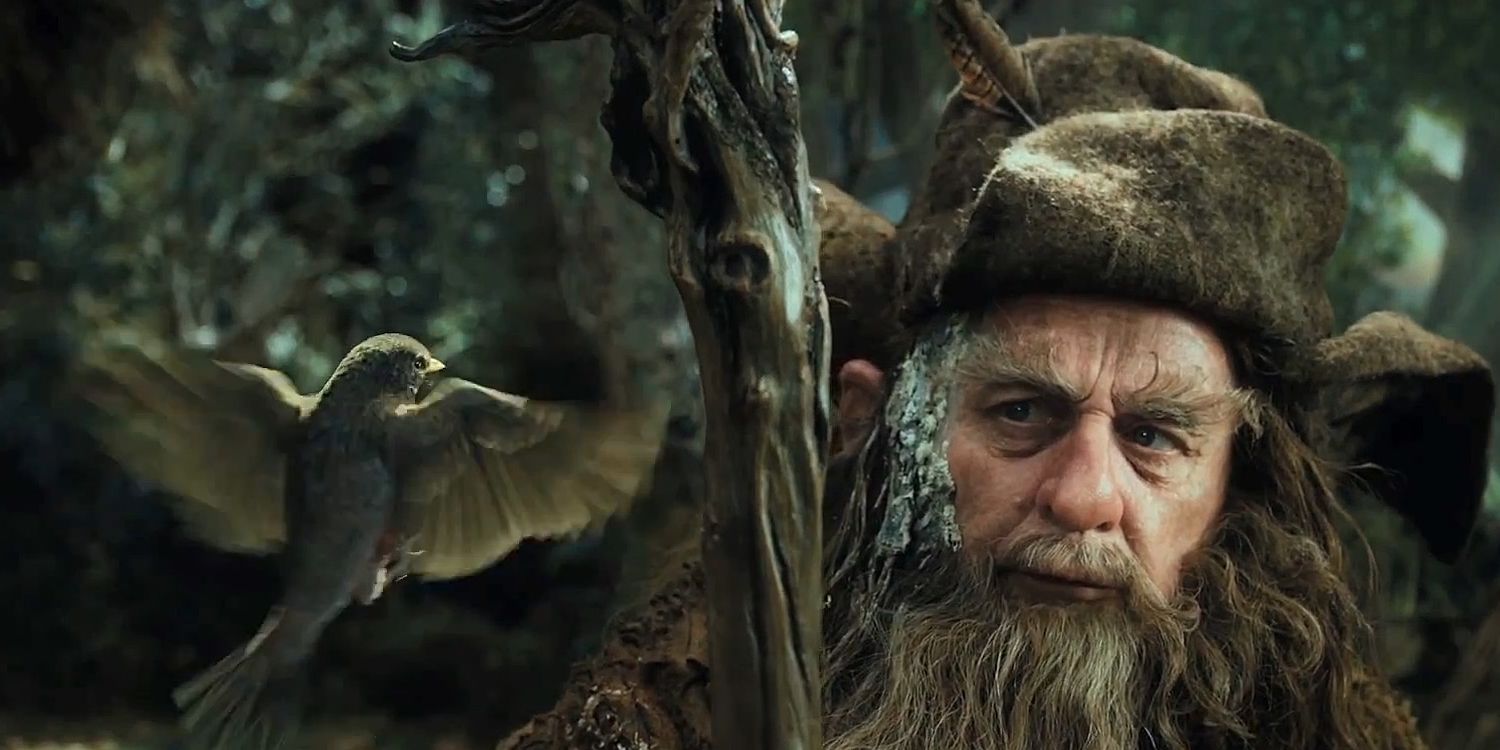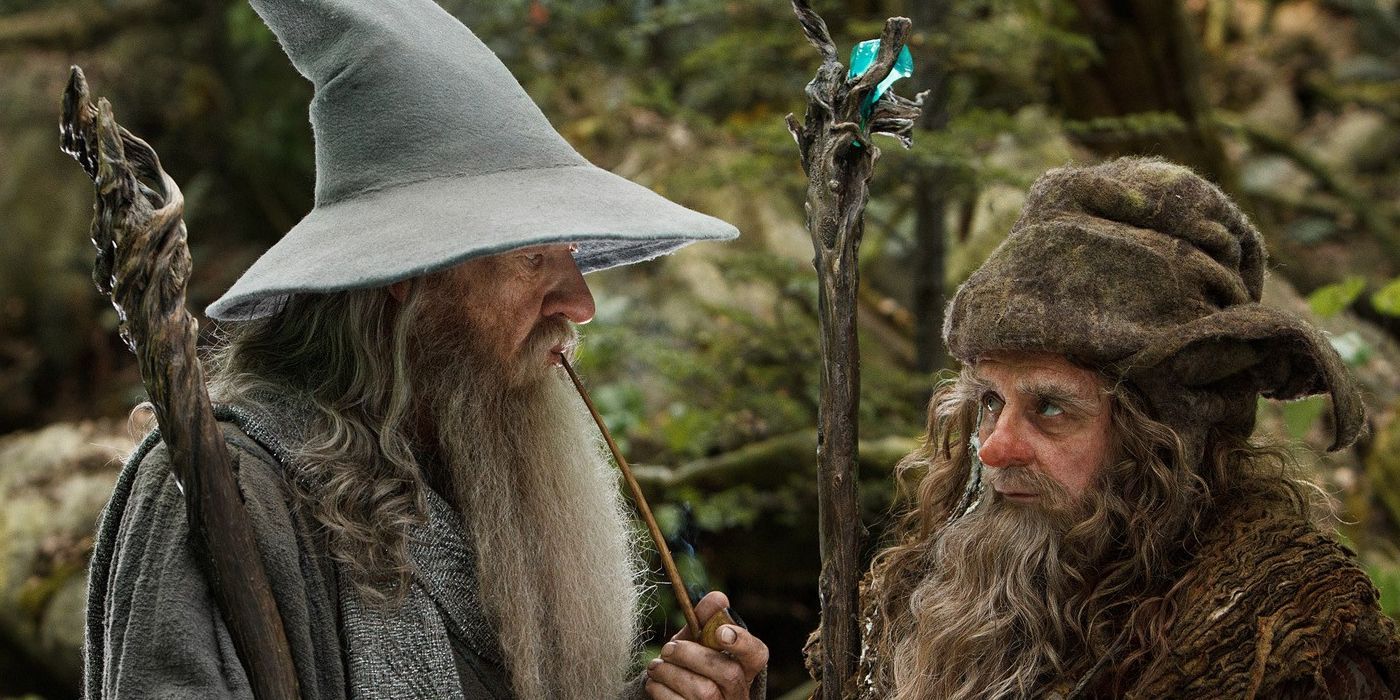Peter Jackson's The Hobbit film trilogy expanded significantly on elements of author J.R.R. Tolkien's beloved 1937 fantasy novel. Among the more notable is the increased presence and characterization of Radagast the Brown, one of the exalted five Wizards of Middle-earth. Although only briefly mentioned in the source material, his contribution to the plot is crucial. In the films, Scottish actor Sylvester McCoy portrayed Radagast with a quirky screen presence to complement his increased role.
After the events of The Hobbit, Radagast never appears again in the Lord of the Rings books or films, although he has a small but important influence on the events of the War of the Ring, from off-screen. As kingdoms fall and the Fellowship makes its arduous trek toward Mordor, the whereabouts and activities of Radagast the Brown are something of a mystery.
Who Is Radagast the Brown?
One of the five Maiar (angelic beings who served the divine Valar) sent to walk the world as Wizards, Radagast is a shaman-like figure who dwells in the forest at Rhosgobel, near the borders of Mirkwood. He has a special connection with nature and the wild creatures of Middle-earth, as well as great skill with herbs. Gandalf also mentions Radagast is skilled in changing his shape, although this power is never displayed on the page. A bit of a mysterious figure, he's only given the vaguest backstory in Tolkien's texts. It is known, at least, that before coming to Middle-earth from Valinor, he was a servant of the Vala Yavanna, who presides over nature and growing things. It is likely Radagast learned his character-defining love for animals and plants from her.
Unlike the canny and mighty Saruman and Gandalf, Radagast has a distinctly gentle and naïve personality. Gandalf seems to appreciate those traits, calling Radagast "honest" and "a worthy Wizard," but Saruman is openly derisive of him, deeming him "simple" and a fool. Saruman's negative feelings may be rooted in Yavanna begging him to take Radagast as his companion to Middle-earth, like an annoying, tagalong little brother. It turns out Gandalf is right to respect and value Radagast's strengths, as the Wizard's friendship with reclusive figures such as Gwaihir the Great Eagle and Beorn the skin-changer prove useful during the events of both The Hobbit and The Lord of the Rings.
In The Hobbit films, Jackson and his co-creators expanded on Radagast's basic traits to create an idiosyncratic portrait of an oddball, somewhat-bumbling hermit who is nevertheless quite powerful. Amusingly, he's depicted riding a sled pulled by giant rabbits capable of great speed, which he refers to as "Rhosgobel Rabbits." He also appears to share Gandalf's much-memed love for pipeweed -- a fun bit of humorous characterization that fits in well with his canonical affinity for herbs.
Why Isn't Radagast in The Lord of the Rings?
Radagast never appears in The Lord of the Rings, but he is mentioned, and plays a small and fairly significant role in the events of the story: Saruman takes advantage of his trusting nature to rope him into his schemes, and Radagast unwittingly uses his affinity for animals to help the traitorous Wizard amass a wide network of avian spies. He also unknowingly helps to lure Gandalf to Isengard to be captured and held atop the tower of Orthanc.
That mistake is balanced out when Radagast sends the great eagle Gwaihir to Gandalf's rescue, although this is also by accident, because he is still unaware of Saruman's true intentions, and thinks he is sending the eagle to bring critical war news. Gwaihir sees that Gandalf is in trouble when he arrives at Isengard and promptly saves him. Regardless of Radagast's knowledge, the rescue still wouldn't have been possible without his unique gifts and connections to nature.
Tolkien wrote that Radagast eventually became too obsessed with the natural world, spending his days deep in the wild communing with animals and studying their ways. He became something of a recluse, which led him to stay out of the War of the Ring. When Elrond calls upon his allies to unite against Mordor, Radagast fails to respond, leaving Gandalf as the only Wizard on the side of those actively opposed to Sauron. Scouts are sent to Rhosgobel to seek out Radagast following the Council of Elrond in Rivendell, but they find it empty. After that, Radagast is never heard from again.
By failing to show up to battle against Sauron, Radagast forsook his divinely mandated mission to help the people of Middle-earth. Thus, Tolkien mused in his private writings that Radagast would likely not be invited back to Valinor along with the likes of Gandalf, at least not at first. However, his failure was not nearly as bad as Saruman's, as Radagast didn't commit a deliberate betrayal. Furthermore, because he was a servant of Yavanna, it was only to be expected that he would feel the same deep love she holds for wild creatures. In a sense, he actually succeeded at his mission by taking his stewardship of nature seriously and devoting himself to it. Therefore, there is a chance he may have been forgiven and allowed to return to Valinor at a later time.



